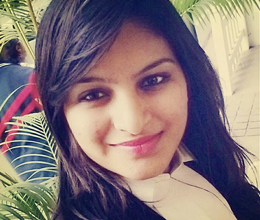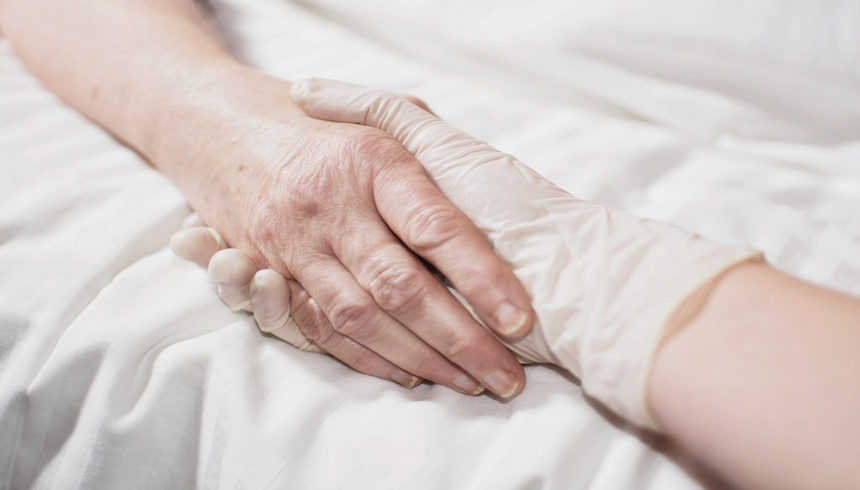Euthanasia in India:
Euthanasia is a debate that arose with the development in technology. Until then, a person suffering with sickness would either recover or die. However, technology has made the situation patchy as it can extend the life of a person artificially sans full recovery and can also painlessly terminate the life of a person using drugs.
Hence, euthanasia has been a topic of discussion for decades as any law that regulates the life and death of a person is questioned from different perspectives – ethical, moral, philosophical, legal, political etc.
Euthanasia has been derived from the Greek word ‘euthanatos’ meaning good death. ‘Eu’ means good and ‘thanatos’ means death. It is an act of ending the life of a patient who is terminally ill or is suffering from an incurable condition using extraordinary medical treatments, in order to free him/her from pain and suffering. Therefore, it is also know as ‘Mercy Killing.’
Legal Position of Euthanasia in India:
Euthanasia has been illegal in India. The act of the doctor or the mercy killer would attract provisions of Section 304 of IPC that is, culpable homicide not amounting to murder. This is if the victim has given consent to it as it would attract exception 5 of Section 300 which reads as under:
‘Culpable homicide is not murder when the person whose death is caused, being above the age of eighteen years, suffers death or takes the risk of death with his own consent.’
In the absence of the victim’s consent, the doctor or mercy killer would be penalised for murder under Section 302 of IPC.
Case Laws:
P.Rathinam v. Union of India
It was in 1994 that P.Rathinam had challenged the constitutionality of Section 309 IPC, which provides for punishment for attempt to suicide. The Supreme Court in this case legalised suicide declaring the provision unconstitutional. The court noted that ‘Article 21 has conferred a positive right to live which carries with it the negative right not to live.’ The court was of the opinion that ‘It is a cruel and irrational provision, and it may result in punishing a person again (doubly) who has suffered agony and would be undergoing ignominy because of his failure to commit suicide.’
The court also drew a corollary between suicide and euthanasia pointing out that even though the two acts are different in the sense that suicide is committed by oneself whereas euthanasia is performed by someone else. However, as far as passive euthanasia goes, one of the conditions is consent of the patient making it almost similar. However, the court refused to dwell over it, as it was beyond the scope of the present petition. The judgement still gave a ray of hope to those who advocated passive euthanasia.
Smt. Gian Kaur v. State of Punjab
Unfortunately, the elation was short-lived as in 1996, the Supreme Court of India reversed it’s previous judgement and legalised Section 309 and Section 306. It held that in case of a ‘patient who is terminally ill, death due to termination of natural life is certain and imminent and the process of natural death has commenced. Euthanasia in such cases is not of extinguishing life but only of accelerating conclusion of the process of natural death which has already commenced.’
However, ‘this cannot be interpreted to mean that Section 21 includes therein the right to curtail the natural span of life. The court was of the opinion that assisted suicide and assisted attempt to commit suicide are made punishable for cogent reasons in the interest of society.‘
Aruna Ramchandra Shanbaug v. Union Of India & Ors
Thereafter, the debate gained impetus in 2011 in the case of Aruna Shanbaug who was in a vegetative state for over 40 years after she was brutally assaulted in 1973. The court laid down guidelines on euthanasia in this case. The court had appointed a committee of three established Doctors in Mumbai who submitted a report on Aruna’s health to the court.
The report submitted an extensive report of her behaviour, neurological condition and general health condition. It was reported that she met almost all the conditions of being in Permanent Vegetative State (PVS) as PVS is a clinical condition of unawareness of self and environment. The patient breathes spontaneously, has stable circulation and shows cycles of eye closure and opening which may stimulate sleep and waking.
The court discussed the difference between active and passive euthanasia. Active Euthanasia is when something is done in order to bring an end to the life of the patient, like injecting lethal substances. Whereas, Passive Euthanasia is withdrawing medical treatment in order to bring an end. Therefore, in active euthanasia something is done to end the life, whereas in passive euthanasia, nothing is done.
The court laid down guidelines for undertaking euthanasia following the Vishaka Case until the Parliament came up with a law.
- A decision to discontinue life support has to be taken by parents or spouse or close relatives and in their absence by next friend. The decision must be bonafide
- Such a decision needs approval from the High Court concerned as laid down in Airedale’s Case.
With this, active euthanasia was declared illegal and passive euthanasia was allowed in certain cases.
Finally, after years of debates and legal battles, the Union Government has come up with a draft bill. The bill is on passive euthanasia that allows patients to terminate medication and allow nature to take it’s own course. The title of the bill is Terminally Ill Patients (Protection of Patients and Medical Practitioners) Bill. You can read the Draft Bill here.
What the Bill contains:
- The bill considers anyone who is 16 years and above to be competent patient who can take decision for oneself. If the patient expresses desire to terminate medical treatment, it shall be binding on the practitioner provided it is an informed decision. The practitioner shall inform the relatives or caretaker of the patient’s decision and shall desist from executing the decision for three days following the intimation.
- Even in cases where the medical treatment has been withheld, the patient shall still be given palliative care that is, reasonable medical and nursing procedures for relief of pain, suffering, discomfort or emotional and psycho-social suffering. Along with provision of food and water
- The bill provides for the procedure of attaining permission from High Court and that the identity of the parties shall be kept confidential.
- Section 11 states that advance medical directive (living will) or medical power of attorney shall be void. Living will is a document in which a person states his/her desire to have or not to have extraordinary life-prolonging measures used when recovery is not possible from his/her terminal condition. This move has been criticised by any experts.
Decision on Passive Euthanasia by the Supreme Court of India:
However, while the Bill was ready following the Shanbaug Case, the Supreme Court was yet to decide on the matter of Passive Euthanasia as the final hearing had begun on January 23, 2014 by a three judge bench headed by CJI Sathasivam. The three judge bench observed that all the previous verdicts on passive euthanasia were contradictory, hence referred the case to a constitution bench. The constitution bench (five judge bench) consisted of Justice AK Sikri, AM Khanwilkar, DY Chandrachud, Ashok Bhushan and led by Chief Justice Dipak Misra.
Petitioner’s Submission:
In the said writ petition under Article 32 of the Constitution, the petitioner, a registered society sought that right to die with dignity be considered as an inherent part of right to live with dignity guaranteed as a fundamental right under Article 21 of the Constitution. The petitioner also requested that a direction be issued to allow terminally ill patients to execute a ‘Living Will and Attorney Authorisation”.
Respondent’s Submission:
Whereas, the respondent, Union of India asserted that the Terminally Ill Patients (Protection of Patients and Medical Practitioners) Bill had met with opposition from several states and that allowing right to die would destroy the potential effect of the basic right to live.
Advanced Directive:
The court also made a detailed observation on Advanced Directive which is a concept introduced in many countries for the times when the patient is unable to express their wishes. Advanced Directive is nothing but the Living Will that is executable only by an adult of a sound and healthy state of mind. The court has laid down guidelines on Advanced Directive as to who can execute it, contents of the Directive, how it must be recorded, when and who can give it effect, what if permission is refused by medical board, revocation of Advanced Directive and absence of Advanced Directive. I shall put up the guidelines on Advanced Directive in a separate post.
Judgement:
After hearing extensive arguments by both parties and examining various case laws over all these years, the Supreme Court very articulately observed that it had to bring about a balance in the relationship between life, morality and the experience of dying. It is hence, necessary for the court to recognise that our dignity as citizens continues to be safeguarded by the Constitution even when life is seemingly lost and questions about our own mortality confront us in the twilight of existence. While upholding passive euthanasia, the court mandated the setting up of committees to play a supervisory role in the decision taken by a treating doctor in good faith.
Justice Ashok Bhushan, in his judgment concluded that:
(a) The right to die with dignity as fundamental right has already been declared by the Constitution Bench judgment of this Court in Gian Kaur case and we reiterate.
(b) We declare that an adult human being having mental capacity to take an informed decision has the right to refuse medical treatment including withdrawal from life saving devices.
(c) A person of competent mental faculty is entitled to execute an advance medical directive in accordance with safeguards referred in the judgment.








There Are 4 Comments